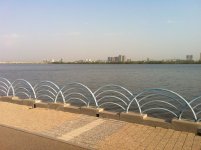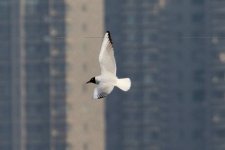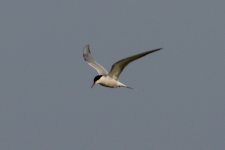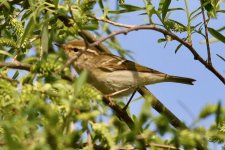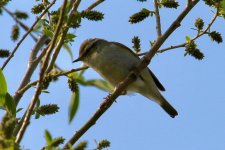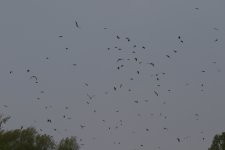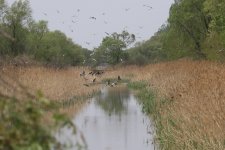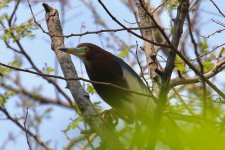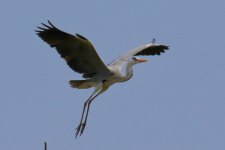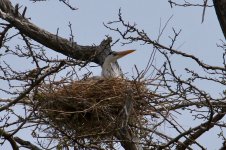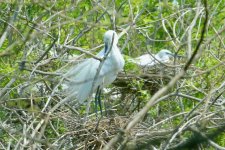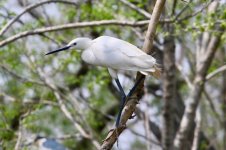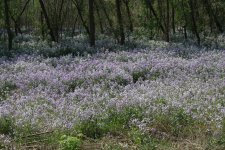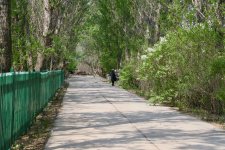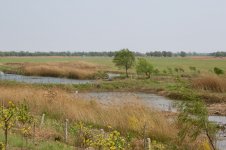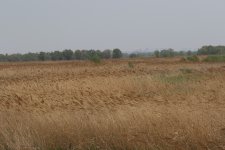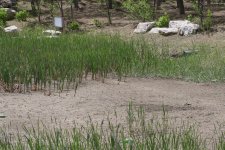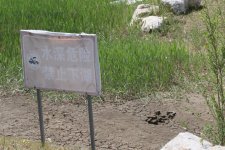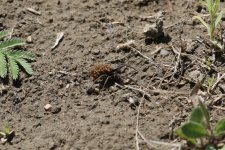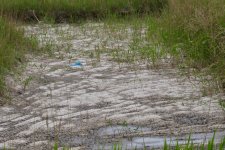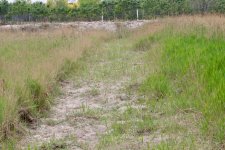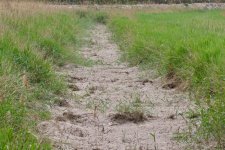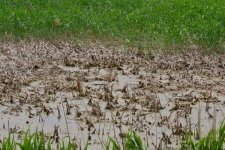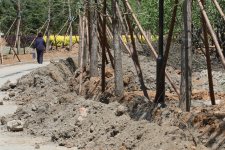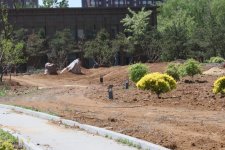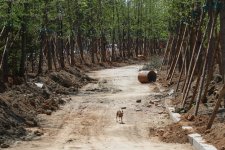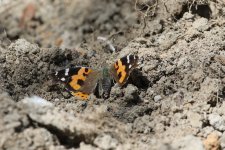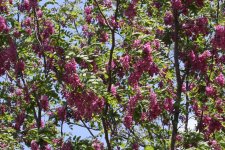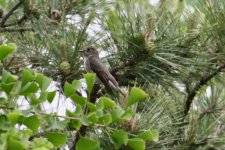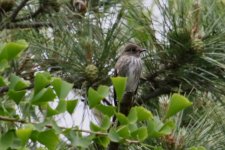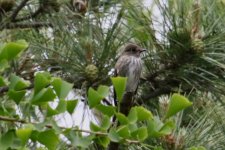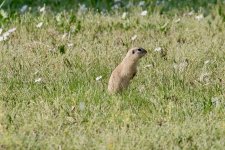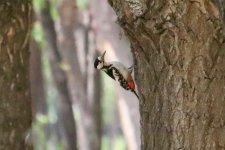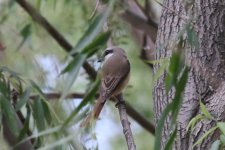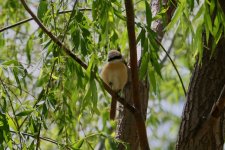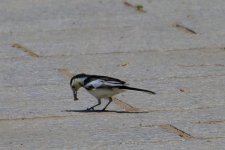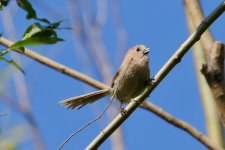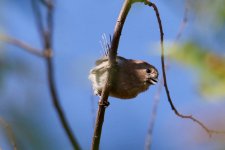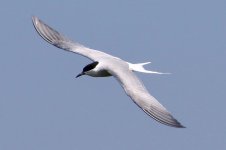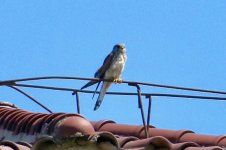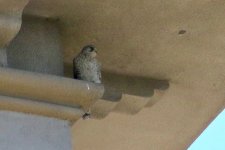Owen Krout
Well-known member

May 2, 2017
I located another great birding spot which is actually easier to access than much of what I have had up to now. The Panjin Wetland Park is due north of us along the Shuangtaizi River. (For reasons that I don't understand, locally people all refer to it as the Liao River, which is actually to the East of the city.) The park is actually along both banks of the river for several kilometers and while busy early in the morning, it is not overwhelmed with people like many such areas in China. The part we were in today was a large lake immediately adjacent to the river and on the south side, within walking distance to the Panjin Railway Station. The good part is that it is only 22 RMB by taxi from our front gate or, with a kilometer walk to the bus, only 2 RMB. All according to whether your time or saving money is more important.
I arrived at 06:30 this morning and spent a couple of hours exploring while my wife wandered about with the dog. The place was thick with Yellow-Browed Warbler and I managed to get not only some of the best pics that I have of such, but also a decent audio file of their calls. Black-headed Gull are numerous and I managed to pick-up a new tic with a few Common Tern that were hanging around the edges of the gull.
I foolishly waited until walking into the park to go through the ritual of uncapping the lens, dusting it off, installing the glare shield, and turning the camera on and as a result managed to miss another new tic as I missed an ID pic of a brief look at a couple of what I think may have been Sooty Tern as they soared out of sight on up the lake. Very dark colored backs and upper wings.
Also briefly seen, but not good enough to verify was what I think was an Oriental Reed Warbler. It broke out of a patch of reeds, briefly stopping in a nearby tree before quickly leaving the area. I did get a quick look at a pair of Chinese Penduline Tit in a brushy area.
The lake is large enough that I expect to find a lot of migrants come the next season.
Panjin Wetland Park, Liaoning, CN
May 2, 2017 6:30 AM - 8:30 AM
Protocol: Traveling
3.0 kilometer(s)
10 species
Black-headed Gull (Chroicocephalus ridibundus) 25
Common Tern (Sterna hirundo) 6
Eurasian Magpie (Pica pica) 1
Barn Swallow (Hirundo rustica) 5
Chinese Penduline-Tit (Remiz consobrinus) 2
Light-vented Bulbul (Pycnonotus sinensis) 2
Yellow-browed Warbler (Phylloscopus inornatus) 20
Vinous-throated Parrotbill (Sinosuthora webbiana) 2
Olive-backed Pipit (Anthus hodgsoni) 4
Eurasian Tree Sparrow (Passer montanus) 5
View this checklist online at http://ebird.org/ebird/view/checklist/S36475654
This report was generated automatically by eBird v3 (http://ebird.org)
I located another great birding spot which is actually easier to access than much of what I have had up to now. The Panjin Wetland Park is due north of us along the Shuangtaizi River. (For reasons that I don't understand, locally people all refer to it as the Liao River, which is actually to the East of the city.) The park is actually along both banks of the river for several kilometers and while busy early in the morning, it is not overwhelmed with people like many such areas in China. The part we were in today was a large lake immediately adjacent to the river and on the south side, within walking distance to the Panjin Railway Station. The good part is that it is only 22 RMB by taxi from our front gate or, with a kilometer walk to the bus, only 2 RMB. All according to whether your time or saving money is more important.
I arrived at 06:30 this morning and spent a couple of hours exploring while my wife wandered about with the dog. The place was thick with Yellow-Browed Warbler and I managed to get not only some of the best pics that I have of such, but also a decent audio file of their calls. Black-headed Gull are numerous and I managed to pick-up a new tic with a few Common Tern that were hanging around the edges of the gull.
I foolishly waited until walking into the park to go through the ritual of uncapping the lens, dusting it off, installing the glare shield, and turning the camera on and as a result managed to miss another new tic as I missed an ID pic of a brief look at a couple of what I think may have been Sooty Tern as they soared out of sight on up the lake. Very dark colored backs and upper wings.
Also briefly seen, but not good enough to verify was what I think was an Oriental Reed Warbler. It broke out of a patch of reeds, briefly stopping in a nearby tree before quickly leaving the area. I did get a quick look at a pair of Chinese Penduline Tit in a brushy area.
The lake is large enough that I expect to find a lot of migrants come the next season.
Panjin Wetland Park, Liaoning, CN
May 2, 2017 6:30 AM - 8:30 AM
Protocol: Traveling
3.0 kilometer(s)
10 species
Black-headed Gull (Chroicocephalus ridibundus) 25
Common Tern (Sterna hirundo) 6
Eurasian Magpie (Pica pica) 1
Barn Swallow (Hirundo rustica) 5
Chinese Penduline-Tit (Remiz consobrinus) 2
Light-vented Bulbul (Pycnonotus sinensis) 2
Yellow-browed Warbler (Phylloscopus inornatus) 20
Vinous-throated Parrotbill (Sinosuthora webbiana) 2
Olive-backed Pipit (Anthus hodgsoni) 4
Eurasian Tree Sparrow (Passer montanus) 5
View this checklist online at http://ebird.org/ebird/view/checklist/S36475654
This report was generated automatically by eBird v3 (http://ebird.org)




